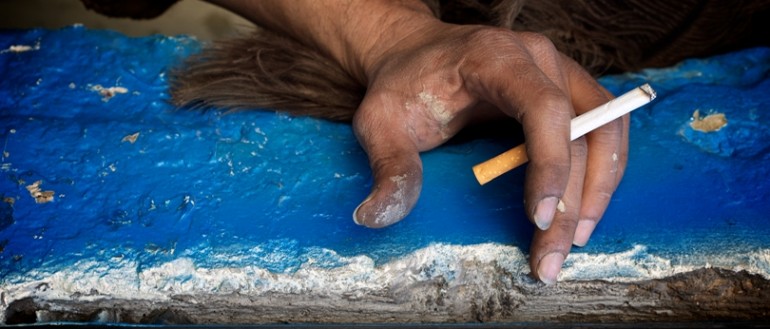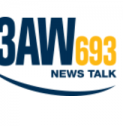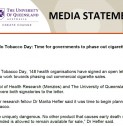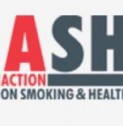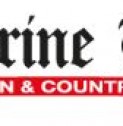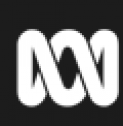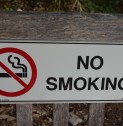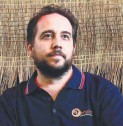Tobacco smoking was responsible for 20 per cent of national Aboriginal and Torres Strait Islander deaths and 12.1 per cent of the total national Aboriginal and Torres Strait Islander burden of disease in 2003. First Nations Australians' smoking rates are falling, but nearly 50% of First Nations Australian adults smoke, more than double the smoking prevalence among all Australians.
The harm caused by tobacco is a major public health problem for First Nations Australians.
Upholding Menzies’ commitment to informing public health policy, Menzies staff assist governments, Aboriginal Community Controlled Health Services and other organisations in developing evidence-based tobacco control policies. They have been involved in assisting the implementation of the tobacco control elements of the national Indigenous Chronic Disease package, smokefree policies, and in monitoring progress in reducing smoking in the Northern Territory (NT). Associate Professor David Thomas chairs the Northern Territory Tobacco Advisory Committee which reports annually on the state of smoking in the NT.
Our research focus:
- To answer questions about Indigenous tobacco control and areas that are most likely to lead to the greatest reductions in Indigenous smoking
- To investigate smoking in a range of areas to ensure an impact is made both on a local community level as well as a national one
- To contribute to the development and implementation of effective, evidence-based policies and programs through evaluation and other research.
Our research impact:
- Informed public health policy on smoking
- Monitored trends in Indigenous smoking
- Assessed impact of tobacco control activities and policies.
Key staff:
Collaborators:
- Pierce, J.P., Messer, K., White, M.M., Cowling, D.W., & Thomas, D.P. (2011) Prevalence of Heavy Smoking in California and the United States, 1965-2007. The Journal of the American Medical Association, 305(11), 1106-1112.
- Thomas, D.P., Fitz, J.W., Johnston, V., Townsend, J., & Kneebone, W. (2011) Wholesale data for surveillance of Australian Aboriginal tobacco consumption in the Northern Territory. Tobacco Control, 20(4), 291-295.
- Thomas, D. (2012) National trends in Aboriginal and Torres Strait Islander smoking and quitting, 1994–2008. (2012). Australian and New Zealand Journal of Public Health, 36(1), 24-29. Additional tables are available here.
- Thomas, D.P., & Bond, L. (2012). The tobacco industry and Aboriginal and Torres Strait Islander people. Medical Journal of Australia, 197(1), 24-26.
- Johnston, V., Liberato, S., & Thomas, D. (2012). Incentives for preventing smoking in children and adolescents. Cochrane Database of Systematic Reviews, 10, CD008645.
- Thomas, D.P. (2012). Changes in smoking intensity among Aboriginal and Torres Strait Islander people, 1994-2008. Medical Journal of Australia, 198(9), 479.
- Johnston, V., Westphal, D., Earnshaw, C., & Thomas, D.P. (2012). Starting to Smoke: A qualitative study of the experiences of Australian Indigenous Youth. BMC Public Health, 12, 963.
- Thomas, D.P., Ferguson, M., Johnston, V., & Brimblecombe, J. (2013). Impact of tobacco tax increase in remote Australian Aboriginal communities. Nicotine & Tobacco Research, 15(6), 1099-1106.
- Johnston, V., Westphal, D., Glover, M., Thomas, D.P., Segan, C., & Walker, N. (2013). Reducing smoking among indigenous populations: new evidence from a review of trials. Nicotine & Tobacco Research,doi: 10.1093/ntr/ntt022.
- Northern Territory Tobacco Control Advisory Committee (Thomas D, Chair). (2013) Annual Report. Darwin: Northern Territory Department of Health. Retrieved from website.
Click here to view more smoking publications in PubMed.
-
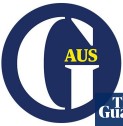
‘Total ban’: could this be the last generation of smokers?
Associate Professor Marita Hefler says It’s a lazy argument to say that ‘prohibition never works’ or to use the US experiment from the 1920s or even the ‘war on drugs’ as evidence.
-

Voice of Islam | World Health Day 2022: Our Planet and our Health - Impacts of smoking
Professor Marita Hefler was a guest on the program to discuss tobacco’s effects on human health and the environment.
-
Push for Australian government to ban cigarette retail sales
Senior Researcher Menzies School of Health Research, Dr Marita Hefler, says tobacco availability should be “drastically reduced”.
-
Expert calls for complete cigarette ban in 10 years time
Senior Researcher at the Menzies School of Health Research Dr Marita Hefler says there also needs to be a plan in place to help retailers deal with declining cigarette sales.
-
Media Statement | World No Tobacco Day: Time for governments to phase out cigarette sales
This World No Tobacco Day, 148 health organisations have signed an open letter calling on governments to work towards phasing out commercial cigarette sales.
-
LETTER: 148 ORGANIZATIONS CALL FOR PHASING OUT SALES OF COMBUSTIBLE TOBACCO PRODUCTS
The lessons learned in 2020 from the bold actions taken to address the COVID-19 pandemic provide an opportunity to consider equally bold actions that will be required to tackle other global health pandemics.
-
Restricting sales to pharmacies proposed
The Centre for Research Excellence on Achieving the Tobacco Endgame (CREATE) will involve researchers from 11 institutions with the aim of phasing out smoking for good.
-
No stigma for smoking among Yolngu people in East Arnhem Land
A public health study into the effectiveness of tobacco control strategies in East Arnhem Land has found no evidence of smoking-related stigma among Yolngu people.
-
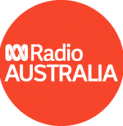
Tongans use social media to fight lifestyle diseases
The training comes as new research from the Menzies School of Health looking at Australia's indigenous community has shown that using Facebook to deliver health messages can be effective.
-
NT's high smoking rate sparks calls to ease vaping laws
Menzies School of Health head of tobacco research David Thomas said there simply was not enough evidence about the potential health benefits.
-
.jpg&w=123&h=126)
Health survey of male Aboriginal and Torres Strait Islander in the NT
The Alcohol, Other Drugs, and Gambling (AODG) Unit at Menzies School of Health Research is leading a research project relating to Health Literacy Among Young Aboriginal and Torres Strait Islander Males in the NT.
-
BuzzFeed | Scientists Are Rejecting Massive Amounts Of Money
Multiple Australian researchers have asserted that they will not accept funding or support from a tobacco industry-funded research organisation in an editorial published today.
-
Media Release | Researchers will not accept support from tobacco industry funded Foundation for a Smoke-Free World
Leading Australian researchers have stated they will not accept any funding or support from the tobacco industry funded Foundation for a Smoke-Free World in an Editorial in the Australian and New Zealand Journal of Public Health today.
-
Tackling smoking in remote communities
The development of Yarning about Smoking is a collaboration between the Health Department’s Remote Alcohol and Other Drugs Workforce Program in Primary Health Care and the Menzies School of Health Research
-

Using Facebook to quit smoking
A Territory-wide partnership is aiming to identify how social media can be used to reduce smoking rates among Indigenous people. Through the partnership, a team of community-based researchers is working to understand the type of information people share...
-
Hospitalizations spike as booze bill hits hard | NT News
Professor James Smith comments on government policy, hospital data and harm-minimisation strategies.
-

It’s time for another type of story about Indigenous smoking rates
A leading Aboriginal health researcher has called for research and reporting on Indigenous smoking rates to be reframed, to reflect the good news that is emerging and to acknowledge the role of colonisation, dating back to when tobacco was distributed as rations and wages.
-

Aboriginal Australians ditch cigarettes
The Australian - Menzies School of Health Research Professor David Thomas, who collaborated with the ABS, says each year more indigenous people are successfully quitting and fewer children are taking up the habit.
-

Encouraging Indigenous smoking and quitting trends in latest ABS Report
The latest report by the Australian Bureau of Statistics (ABS) provides encouraging news about national smoking trends among Aboriginal and Torres Strait Islander people over the 20 year period from 1994 to 2014/15.
-

Let’s quit being idiots
The time has come to think seriously about the impact smoking has on us - NT News Opinion Jill Poulsen.
-
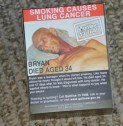
Pack warning labels help Aboriginal smokers butt out
Pack warning labels are motivating Aboriginal and Torres Strait Islander smokers to quit smoking according to new research released by Menzies.
-

Facebook could help lower Indigenous smoking rates
Indigenous people have the highest rates of smoking in the country, but researchers in the Top End believe Facebook could be the most effective way of helping them quit.
-

Facebook could help lower Indigenous smoking rates, ABC TV
Smoking causes 1/5 deaths of Aboriginal and Torres Strait Islander people. Many social media tobacco control campaigns exist, but there is minimal understanding of their effectiveness.
-

Research probes Indigenous smoking
Understanding the reach and impacts of tobacco control strategies on smoking rates in Australia’s Indigenous population has been the focus of PhD research by a Charles Darwin University graduand.
-

The evaluation of Northern Territory’s smoke-free prison policy: successes and unexpected results
An evaluation of the Northern Territory’s smoke free prison policy has been published today in the online journal, Public Health Research & Practice.
-

Jails escape worst link to smokes ban
TERRITORY prisons have escaped the worst of tobacco black markets, violence and low compliance rates that researchers have penned as problems amid smoking bans in southern states, an expert has said.
-
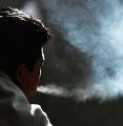
Legislative changes will reduce smoking harms in the NT
Legislative changes announced by the NT and Australian Governments in the last year will make a significant contribution to reducing the harm that smoking causes in the Territory, according to the independent Annual Report on Tobacco Control in the NT.
-
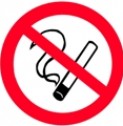
National survey reveals large decline in Indigenous smoking rates
Recently released results from the Australian Bureau of Statics (ABS) have revealed a significant decline in smoking rates amongst Australia’s Indigenous population.
-

Crikey: Northern Territory prisons totally smoke free
All Northern Territory prisons will be totally smoke-free from Monday 1 July. No one will be able to smoke indoors or outdoors within these prisons, or on surrounding correctional centre land including carparks: neither prisoners, visitors nor staff. Prison staff (and inmates) will now be protected from the dangers of secondhand smoke just like many other Australian workers.
-

730NT ABC TV: A report card on the NT's smoking habit
A new report finds the Northern Territory's smoking rates are falling, but are still the highest in the country.
-

ABC News online: Smoking more harmful than grog, study finds
A new report suggests smoking is causing more harm than alcohol abuse in the Northern Territory.
-

Report reveals reduced smoking in the Northern Territory
An independent Annual Report on Tobacco Control in the Northern Territory (NT) which summarises progress towards reducing smoking in the Territory has been released on World No Tobacco Day.
-

Study reveals true cost of smoking to the Territory
Smoking tobacco costs the Territory more than $5,000 per Territorian aged over 14 years, according to a new study conducted by the South Australian Centre for Economic Studies for the Menzies School of Health Research (Menzies).
-

Radio Australia: Research shows smoking rates declining among Indigenous Australians
It's not often we hear good news about health indicators for Indigenous Australians, but a new report has found that the number of heavy smokers within Australia's Indigenous population has almost halved in the past 20 years.
-

Research reveals decline in Indigenous heavy smokers
The number of Indigenous heavy smokers has fallen significantly according to a study by the Menzies School of Health Research.
-

The Conversation: Number of Indigenous heavy smokers down 45%
The number of Indigenous heavy smokers fell from 17.3% in 1994 to 9.4% in 2008, a relative drop of 45%, a study has found.
-

Researcher of the month: Dr David Thomas
Doctor goes to war on a world of smoking.

